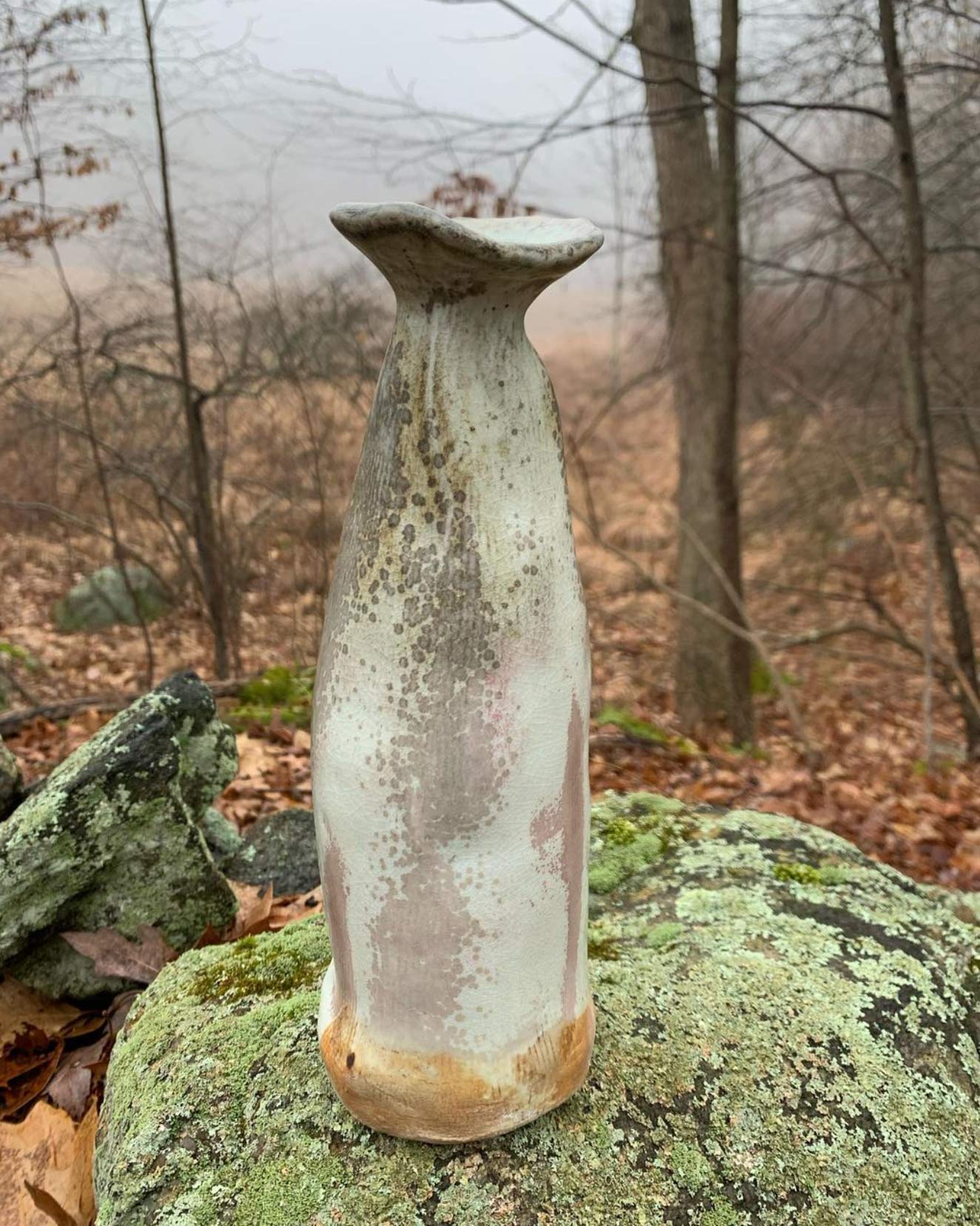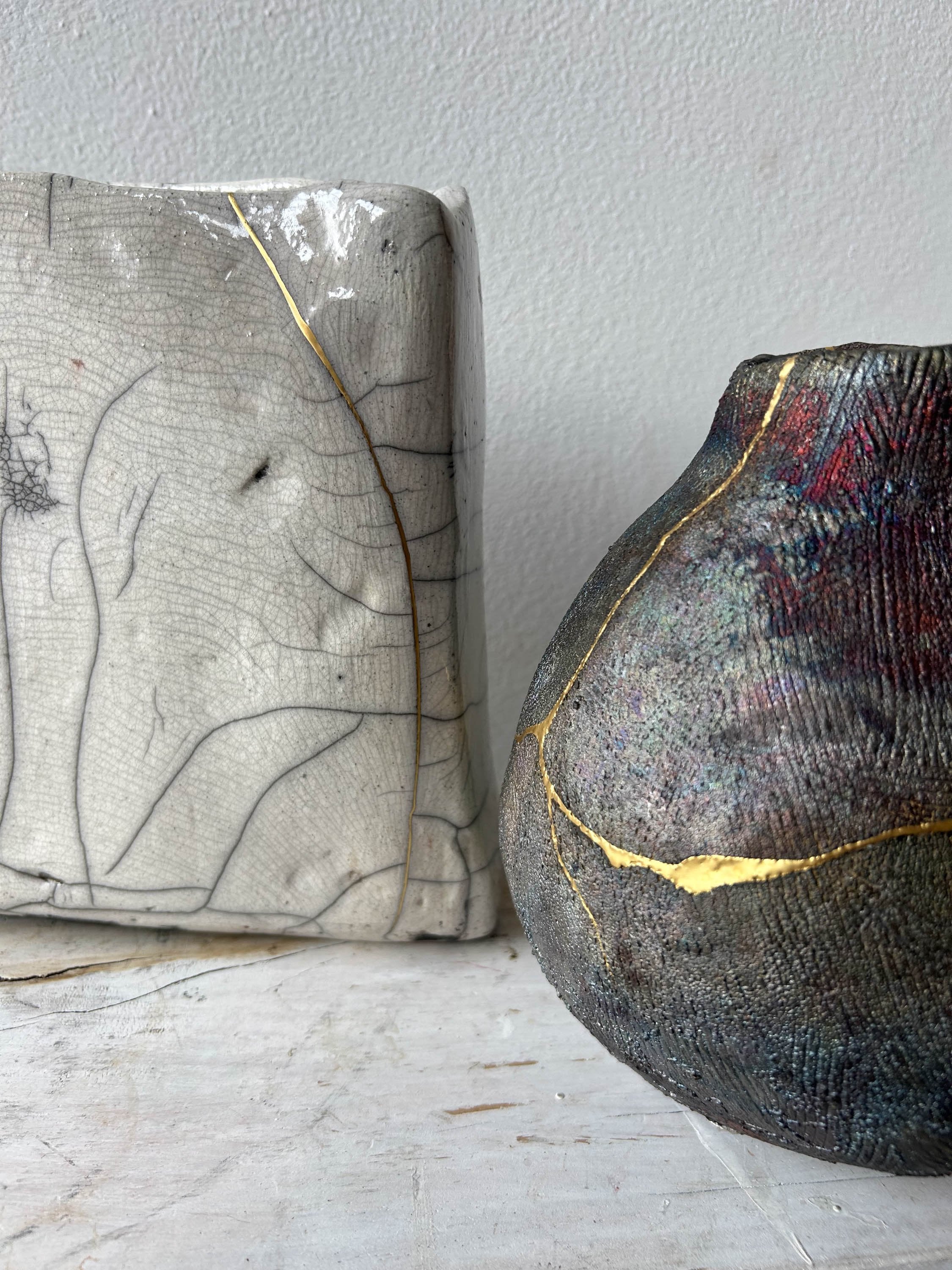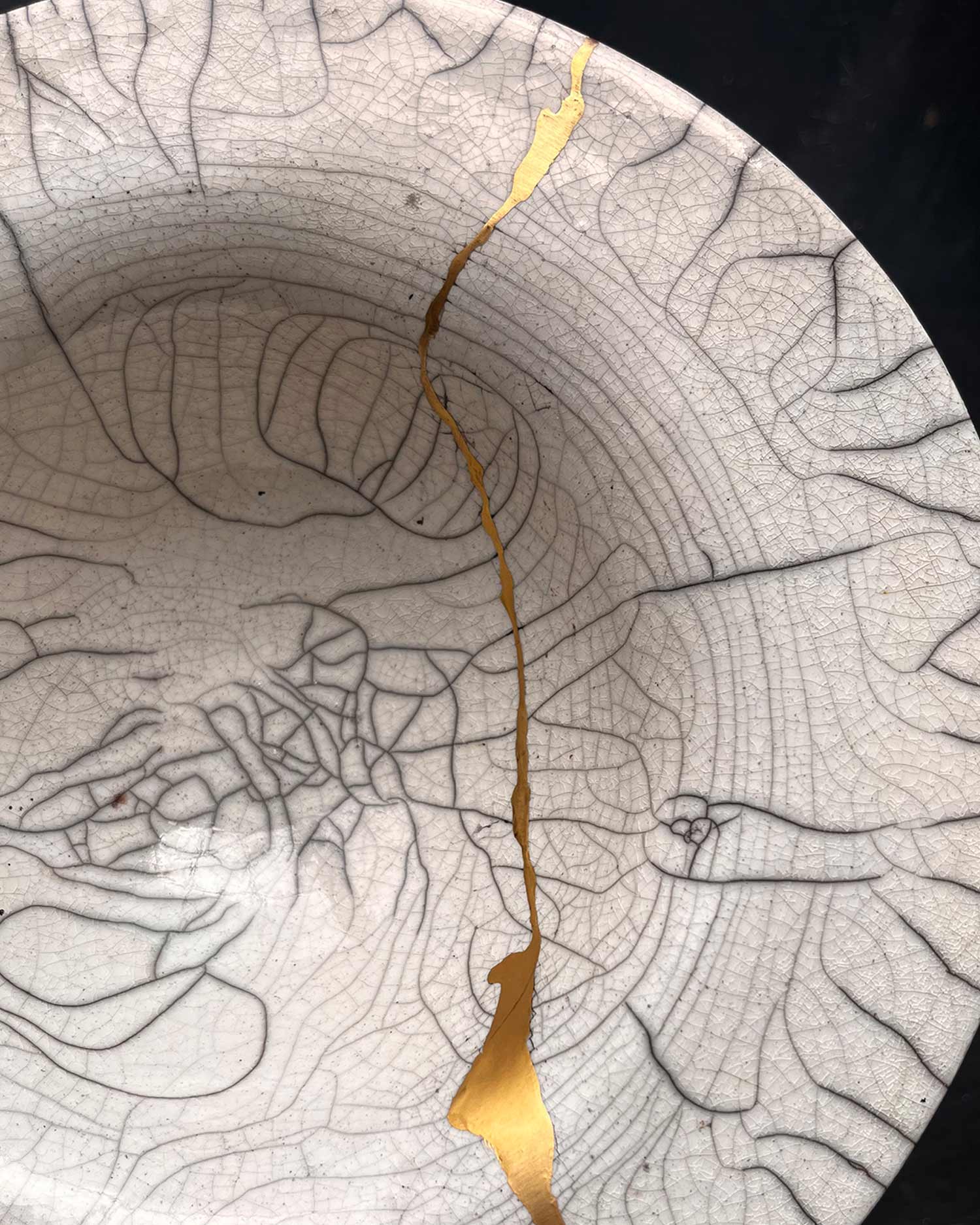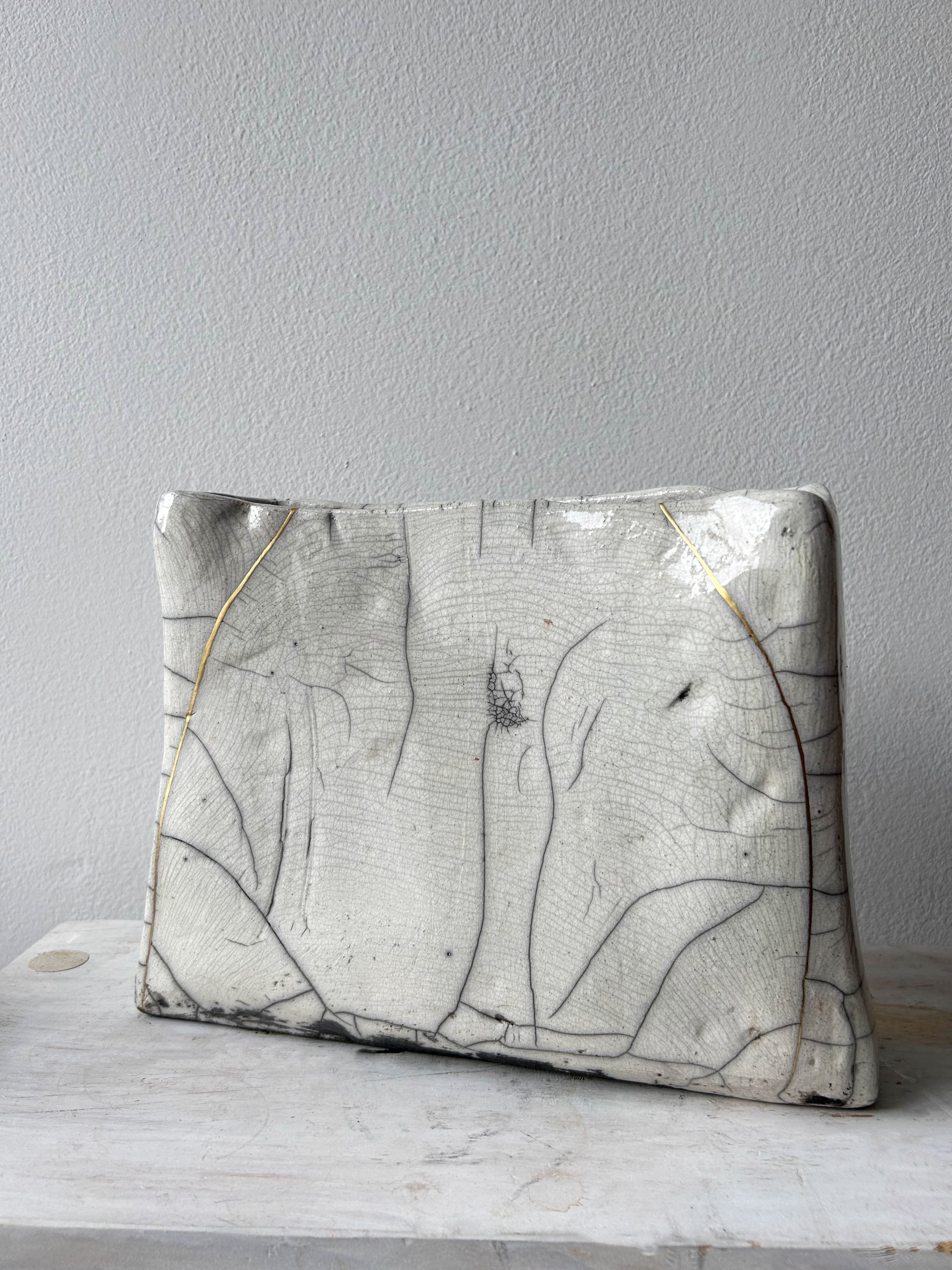Raku-Firing
In Raku firing we remove the glazed ceramics from the kiln while they are red hot, then carefully place them in a chamber with combustible materials. Once the piece is engulfed in flames the chamber is closed, starving the pieces of oxygen. The process creates magical unpredictable results–vibrant metallic colors, or deep crackle lines. Even when all the variables of clay and glaze and kiln are the same, no two pots are ever exactly alike.
"We have become obsessed with the magic and beauty and complexity of the surfaces created during alternative firing processes."

Wood-Firing
We fire in a noborigama-style wood-burning kiln (located in Cold Spring, New York) During these firings, the two chambers of an outdoor kiln are continuously stoked with logs over several days, steadily increasing the temperature, then maintaining a consistent heat and slow cool-down. The flames move across the surfaces of the objects inside, and ash moves and settles to melt wherever it will, leaving traces on the surface of the work. A small piece may cast a “shadow” on the bigger object behind it by blocking ash from making contact. The variations in the heat and atmosphere over time interact with minerals in the clay and glazes to bring out crystalline patterns or flashes of orange, lavender, or blue where we couldn’t have intentionally directed them. There is a dynamism in the finished surfaces that we can't get in our electric kilns.
We collaborate with kintsugi artist Yuko Gungi to reapir our broken works with 24 karat gold lacquer, transforming them into one-of-a-kind objects even more beautiful than our original intent.



